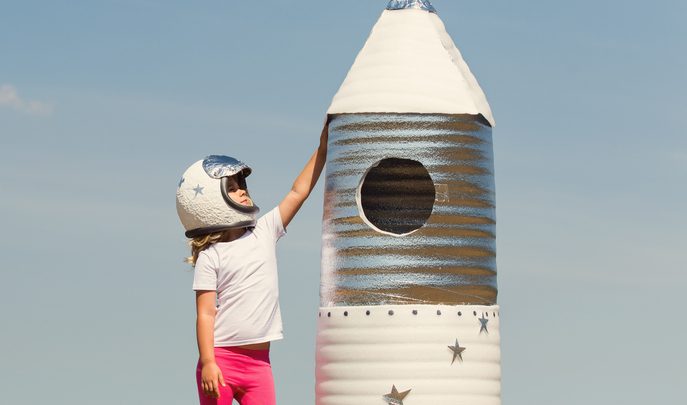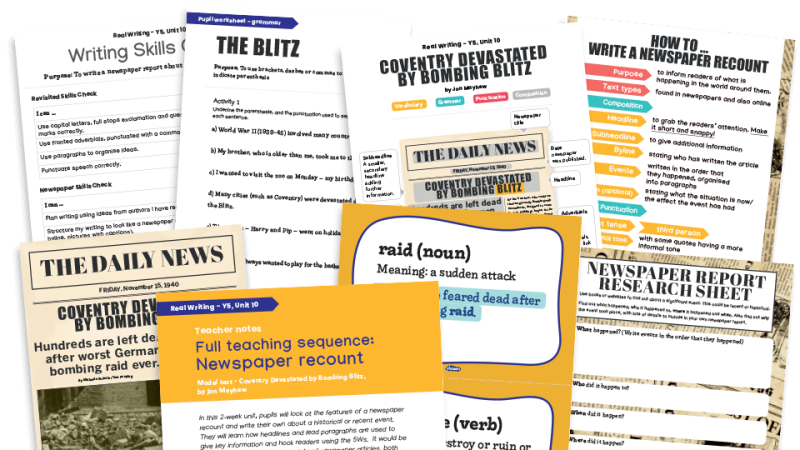Liven Up Your Early Years Play With A Little Drama

Looking for ways to keep your children’s learning playful? Introducing opportunities to explore stories and learn in role will have the desired effect, says James Clements…

Play sits at the heart of how young children explore new ideas and build an understanding of the world.
Opportunities for play are vital, since for children, play is learning. The greatest challenge for teachers lies in keeping the best aspects of play central to the classroom as children grow older. How can we keep them learning and ensure it’s a meaningful and productive part of the curriculum?
One solution is drama. Not the type of drama that is about putting on a play or performing a class assembly, but the playful type of drama that gives children the opportunity to explore stories, characters and issues. This is the type of drama that might well be indistinguishable from play, but which can give children a very real and valuable experience.
Let’s look at two examples of recent projects that bring drama and play together…
‘The Three Little Pigs’ – Oak Class (Reception)
1. Introduction The project begins with the children listening to different versions of The Three Little Pigs over a week. They listen to the teacher tell the story, share books and even explore an interactive app version.
2. Play Once they’re familiar with the story, the children then have the chance for some unstructured play, exploring the characters and acting out the story.
The role play area is set up as the inside of a half-finished brick house, with simple wolf and pig costumes for the children to use. A rail of other costumes stands nearby, so children can introduce new characters should they wish. They also have a pile of foam bricks so they can finish constructing the house. The small world play table features models of the characters and the raw materials (straw, sticks and building blocks) for the children to play the story, creating their own houses for the pigs whenever they wish.
3. Drama In role as one of the pigs, the teacher arrives to ask the children for their help. She’s worried because she’s heard a big bad wolf is coming to eat her. Would the children be able to help? Over the next two afternoons the children work on two tasks:
• Firstly, every child designs a wolf-proof house. They draw their buildings, adding anti-wolf devices. As well as the obvious solid bricks, high fences and strong locks, the children invent a whole host of other features – wolf detectors that sound an alarm, wolf-sized holes dug in the ground and even a special type of wall that squirts out a jet of cold water when huffed and puffed upon.
• Secondly, the children are taken in small groups to build a new house for the pig out of boxes and large pieces of cardboard. They have complete control of the process, with the teacher in role as the pig sitting forlornly nearby, worrying about the wolf.
She interjects to settle any disagreements, keep everyone involved (“What do you think, Tom?”) and hurry them up (“I think I can hear a howl getting closer!”). Once the house is finished, the teacher urges the children to hide inside, before returning in role as the wolf to try (unsuccessfully) to blow the house in.
Over the course of the project, the children have the opportunity to draw and write for a real purpose; work together as a team, practising their communication skills; become familiar with a story in a variety of different ways; and have a lot of fun. Time well spent in an EYFS classroom.
‘Adventures in Space’ – Beech Class (Year 2)
1. Introduction As a hook to the unit, a mysterious poster appears in the classroom asking for volunteers to travel into space. Of course, the teacher denies all knowledge of the poster and where it has come from.
2. Drama The next morning, the teacher begins the lesson in role as the captain of the Starship Nautilus, explaining that he’s looking for a crew for a mission to explore a newly discovered solar system. He tells the children that there are four different roles available on board, and over the course of the morning the children will have the chance to try them out before applying for a job.
3. Play The children move around a carousel, trying out each of the different roles on board the ship. They are:
• Engineering Officer – the children are presented with junk modelling materials and challenged to create a new piece of equipment for the ship.
• Science Officer – using books and tablets, the children research the outer planets of the solar system and beyond.
• Communication Officer – the children are given a sheet of unfamiliar hieroglyphs and the key to translate them. They must read a message and write a reply.
• Security Officer – there are two tasks: PE exercises to prove their fitness (overseen and recorded by a TA) and a map of the spaceship to annotate, identifying possible sources of danger.
4. English The children then write a job application for one of the roles. They need to think carefully about the requirements of the job and why they are particularly suited for it. They are encouraged to reflect on their personal attributes and to draw on the play tasks from earlier.
While some of the children reflect on themselves (“I’m good at talking and listening to my friends”), others throw themselves into role and make some creative additions to their CVs (“I have a black belt in lightsaber fighting” and “I speak 16 galactic languages and know all the types of alien”). Claims that will certainly help them to stand out when applying for a real job one day!
5. Drama In role as the crew of the Starship Nautilus, the teacher and children spend an afternoon in the hall devising and acting out the story. The teacher narrates parts of the story with the children performing alongside. In other parts, the teacher takes on the role of different characters, and other sections are drama games undertaken in role.
Over the course of the afternoon, the children crash-land a spaceship, explore a strange planet and encounter hostile aliens. Thankfully, they make it back safely in time for the end of the day.
Drama and play give children the chance to explore new ideas and concepts, and to behave in different ways in an imaginary world where anything is possible. As Maria Montessori famously put it, “Play is the work of the child.” So no matter how old the class are, head to the hall and get the children working hard!
Get your act together
Four handy drama techniques for drama and play…
1. Teacher in role The teacher plays a role in the drama, prompting action, asking questions or leading the children through the story.
2. Hot-seating A character from the drama is interviewed by the group about his or her behaviour or thoughts. As well as the teacher, different members of the class can take the role of the same character.
3. Whoosh! The teacher narrates the story and the children can join in, taking up roles as characters (or even scenery!) and performing them. When the teacher says “Whoosh!”, the children return to their seats ready for the next section.
4. Thought-tracking While taking part in the drama, children can be asked to freeze. When tapped on the shoulder, they share the thoughts of their character.
James Clements is an English adviser and the creator of shakespeareandmore.com; you can follow him at @James_ShMore












